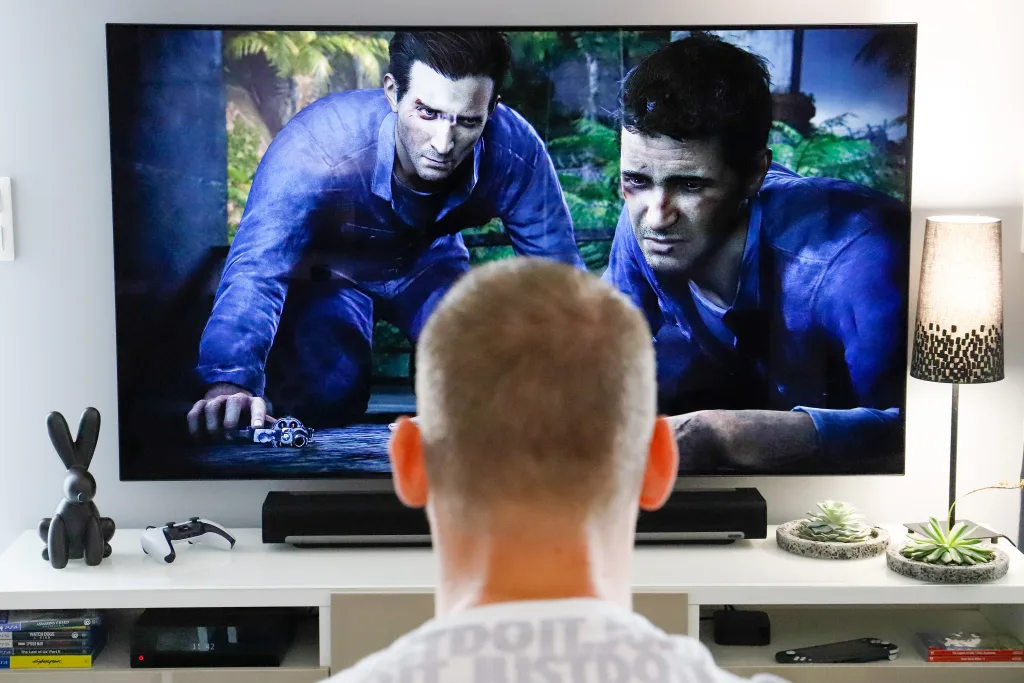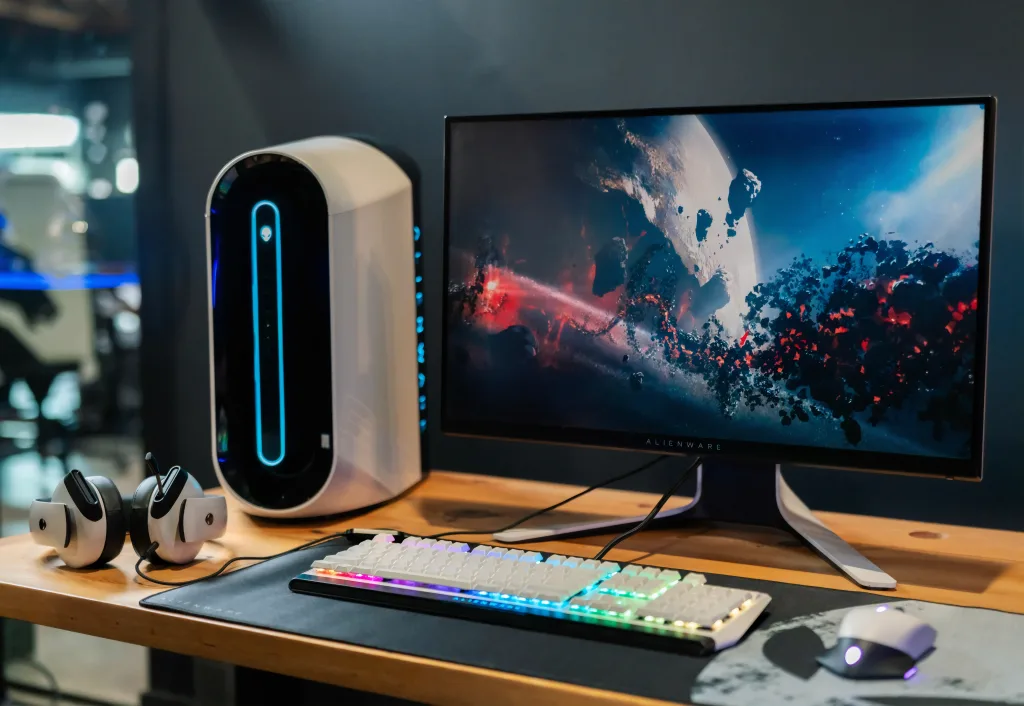When it comes to choosing a computer monitor or a TV, one of the primary decisions you’ll need to make is whether to go for a widescreen or fullscreen display. Both options have their own advantages and disadvantages, so it’s important to understand the differences and consider your specific needs before making a decision.
First, let’s clarify what we mean by widescreen and fullscreen. Widescreen refers to a display with an aspect ratio of 16:9, while fullscreen (or 4:3) has a more square-like shape. The aspect ratio is simply the ratio of the width to the height of the screen.
One of the main benefits of widescreen displays is their ability to provide a more immersive experience, especially when it comes to watching movies or playing modern video games. With a widescreen monitor, the content fills more of your field of vision, creating a more cinematic feel. This is because most movies and TV shows today are produced in widescreen format, so watching them on a widescreen monitor allows you to see the content as intended by the creators.
On the other hand, fullscreen displays have their own advantages, particularly when it comes to certain types of content and tasks. For example, if you primarily use your computer for basic tasks like word processing, web browsing, or playing old-style games, a fullscreen monitor may feel more comfortable. The square-like shape provides a balanced view that is well-suited for these types of activities.
Another factor to consider is the size of the content you typically work with. If you frequently use large tables in Excel or need to have multiple windows open side by side, a widescreen display can provide more screen real estate, allowing you to see more content at once. This can greatly enhance productivity and efficiency, especially for professionals who rely on multitasking.
It’s worth noting that widescreen displays are also the norm when it comes to high-definition TVs. With an aspect ratio of 16:9, these TVs are designed to provide the best viewing experience for HD content. If you enjoy watching movies or streaming shows on a big screen, a widescreen TV is definitely the way to go.
The choice between widescreen and fullscreen ultimately depends on your specific needs and preferences. If you prioritize an immersive viewing experience for movies and games, a widescreen display is the better choice. On the other hand, if you primarily use your computer for basic tasks or prefer a more balanced view, a fullscreen monitor may be the way to go. Consider your usage patterns and content preferences before making a decision, and remember that technology is constantly evolving, so it’s always a good idea to stay informed about the latest trends and advancements in display technology.
Is Widescreen Or Fullscreen Better For Gaming?
When it comes to gaming, widescreen monitors are generally considered better than fullscreen monitors. This is because widescreen monitors offer a wider field of view, allowing gamers to see more of the game environment and have a more immersive experience.
Here are a few reasons why widescreen monitors are preferred for gaming:
1. Enhanced Immersion: Widescreen monitors provide a more cinematic experience by offering a wider aspect ratio. This allows games to be displayed in their intended format, with no cropping or stretching of the visuals. This can greatly enhance the immersion and overall gaming experience.
2. Larger Display Area: Widescreen monitors have a larger display area compared to fullscreen monitors of the same size. This means you have more screen real estate to work with, which can be particularly beneficial for games that require multiple windows or have complex user interfaces.
3. Better Multi-tasking: Widescreen monitors allow for easier multi-tasking while gaming. You can have a game running in one window while having other applications or resources open in other windows. This is particularly useful for streaming, chatting with friends, or referencing game guides while playing.
4. Compatibility with Modern Games: Most modern games are designed to be played on widescreen monitors. Developers optimize their games for the wider aspect ratios, ensuring that the visuals and user interface elements are properly displayed. Playing these games on a fullscreen monitor may result in cropped visuals or stretched interfaces.
5. Future-proofing: Widescreen monitors are becoming the standard in the gaming industry. As game developers continue to design games for wider aspect ratios, having a widescreen monitor ensures compatibility with upcoming titles and provides a better gaming experience in the long run.
That being said, there may be some games or older titles that are better suited for fullscreen monitors. It ultimately depends on personal preference and the specific requirements of the games you play. However, for most modern gaming experiences, a widescreen monitor is generally considered the better choice.

What Is The Point Of Widescreen?
The purpose of widescreen format in movies, TV series, and concerts is to provide a more immersive and visually appealing experience for viewers. Here are some key points to understand the significance of widescreen:
1. Immersive Experience: Widescreen films fill a larger portion of the viewer’s field of vision, creating a more engaging and encompassing experience. The wider aspect ratio allows for a greater amount of visual information to be displayed on the screen, enhancing the overall cinematic experience.
2. Enhanced Visual Composition: Widescreen format allows filmmakers to use a broader canvas to compose their shots. This enables them to incorporate more elements into the frame and create visually stunning compositions that captivate the audience. It offers a wider view of the scenes, showcasing more details and enhancing the visual storytelling.
3. Cinematic Spectacle: Widescreen format is often associated with big-budget blockbuster movies that aim to create a grand cinematic spectacle. The larger aspect ratio allows for more epic and sweeping shots, making the film visually impressive and enhancing the scale of the story being told.
4. Improved Cinematography: Widescreen format provides more space for cinematographers to work with, allowing them to experiment with different camera angles, movements, and compositions. This freedom enables them to create visually dynamic and aesthetically pleasing shots that can enhance the storytelling and emotional impact of the film.
5. Compatibility with Modern Displays: With the advent of widescreen TVs and home theater systems, the widescreen format has become more popular and practical for home viewing. It provides a better fit for modern display technologies, ensuring that viewers can experience the film as intended by the filmmakers.
6. Industry Standard: Widescreen has become the industry standard for most movies, TV series, and concerts. By filming in widescreen, content creators ensure that their work can be presented on a variety of platforms and screens without compromising the visual experience. It allows for a consistent and standardized viewing experience across different mediums.
Widescreen format in movies, TV series, and concerts offers an immersive and visually stunning experience. It enhances the visual composition, allows for more captivating cinematography, and provides a cinematic spectacle for viewers. With its compatibility with modern displays and industry-wide adoption, widescreen format has become an integral part of the entertainment industry.
What Does DVD Widescreen Mean?
DVD widescreen refers to the aspect ratio of the video displayed on the DVD. It indicates that the film or content on the DVD has been preserved in its original wide aspect ratio, typically 2.35:1 or similar, which is wider than the standard 16:9 aspect ratio of most high definition TVs.
Widescreen format allows the film to be displayed in its intended cinematic format, providing a more immersive viewing experience. It retains the full width of the original theatrical release, allowing viewers to see more of the film’s visuals on the screen.
When a DVD is labeled as widescreen, it means that the film has not been cropped or zoomed in to fit the 16:9 aspect ratio of most TVs. Instead, black bars, also known as letterboxing, are added at the top and bottom of the screen to maintain the original width of the film. This ensures that viewers can see the film as it was intended by the director, with no loss of visual information.
To summarize, DVD widescreen refers to the preservation of the original wide aspect ratio of a film on a DVD, allowing viewers to experience the film in its intended format. It retains the full width of the theatrical release and adds black bars to the top and bottom of the screen to maintain the original width of the film.
What Is The Fullscreen Size?
The fullscreen size, also known as the aspect ratio, is commonly represented by the ratio 4:3. This means that the width of the screen is 4 units and the height is 3 units. It is called fullscreen because it was the standard aspect ratio for television and computer monitors before the widescreen format became popular.
The exact dimensions of the fullscreen size can vary depending on the display device, but a common resolution for fullscreen is 1024×768 pixels. This means that the screen has a width of 1024 pixels and a height of 768 pixels.
The fullscreen size provides a more square-shaped screen compared to the widescreen format, which has a wider aspect ratio of 16:9. While the widescreen format is now more commonly used for modern displays, the fullscreen format is still supported by many devices and is often used for certain applications or older content.
The fullscreen size refers to the aspect ratio of 4:3 and typically has a resolution of 1024×768 pixels. It offers a more square-shaped screen compared to the widescreen format and was the standard aspect ratio before widescreen became popular.

Conclusion
The choice between widescreen and fullscreen monitors ultimately depends on the specific use case and personal preference.
For those primarily using old-style programs and basic games, a 4:3 fullscreen monitor may provide a more comfortable and familiar experience. The square-shaped screen allows for a natural display of traditional content, such as word processing documents and solitaire games.
However, for modern applications like gaming, movie-watching, and working with large tables or spreadsheets, a widescreen monitor with a 16:9 aspect ratio offers significant advantages. The wider display creates a more immersive experience, especially when watching movies that are produced in widescreen format. Additionally, widescreen monitors are better suited for multitasking, allowing users to have multiple windows or applications open side by side without feeling cramped.
It is worth noting that widescreen monitors align with the aspect ratios of high-definition TVs and most current films, making them the preferred choice for media consumption. With the majority of blockbuster movies and TV series being filmed and distributed in widescreen format, a widescreen monitor enhances the viewing experience by filling a larger portion of the field of vision.
Ultimately, the decision between widescreen and fullscreen monitors comes down to individual needs and preferences. While fullscreen may provide a more nostalgic feel and compatibility with older programs, widescreen offers a more visually appealing and immersive experience for modern applications.
